Monday, November 27, 2006
Torres del Paine Day 4 - Grey Glacier
Thank god it´s a bit of a rest day today as I feel terrible. I slid off the thermarest mat last night and slept on the ground. Even with 3 pairs of socks, all my clothes and two hats I was freezing.
The sun out is out for the first time in three days and I sit on the edge of the lake rubbing my sore knees from the pounding they´ve taken over the past few days.
We take a boat trip past huge icebergs to the face of the glacier. Huge ice towers, tinged with blue (where the ice is more compact) rise up to the sky.
We have lunch at Lake Pehoe overlooking the Torres massif before taking a short but steep walk to the Condor lookout which overlooks the mountain range and lakes.
On the way back to our campsite at Laguna Amarga, driving through grassy steppe, we spot two guanacos mating. The hills are covered in guanacos. It´s the first time I´ve seen one and now they´re everywhere.
Tomorrow is our last day and hike and reputedly the hardest - to the base of the Torres peaks. Our tour guide conveniently leaves us and hotfoots it back to Puerto Natales, but not before leaving me his minus 19 degree sleeping bag. He says I´ll sleep well tonight, and I do.
Torres del Paine Day 3 - Grey Glacier
It´s a shorter and easier walk to the Grey Glacier or 'Grey' for short. It´s only 11km so I´m relieved after yesterday´s ordeal. We start in scrubby valley walking up and down through rocky terrain until we reach the lookout point over the glacier. There are even icebergs that have drifted down the lake from the glacier. My first thought is that is looks remarkably similar to Pio XI - craggy with blue slits that glint like rough diamonds - but it´s beautiful and I can´t wait to get nearer.
We stop for lunch in field of dandelions before reaching Grey Campsite at 2pm. The lake really is grey in colour because of sediments in the glacier but it´s drinkable. I get my first close-up of blue icebergs floating in the lake. I climb to a viewpoint where I can clearly see the face of the glacier. It´s huge and dwarfs a passenger vessel cruising past. The glacier is part of the massive Southern Patagonian Ice field, which is the third largest in the world after Antarctica and Greenland.
At the campsite we are treated on Baileys on (glacial) ice. Later that evening the guys that run ice-climbing on the glacier (we couldn´t go as there was a problem with the boat) start a campfire and bring out the Gato Negro (cartons of red wine) to kill the cold. I start talking to one who´s been working in the park for a while and ask if he has any desire to travel outside Chile. He tells me he has no interest in seeing Europe or the US. It´s beautiful here (in Torres del Paine) and he gets to meet people staying at the campsite from all over. Well, he does have a point. It is beautiful.
The stars are out in abundance tonight and I haven´t seen so many since Dorset, April 2003. I remember it clearly.
Contemplating the French Valley, Torres del Paine
This is to satisfy those of you that have complained that there aren´t any photos of me on the blog (did you miss the tango one?). It was taken by my tour leader who turned out to be a very talented photographer.
Torres del Paine Day 2 - Valle del Frances
I don´t sleep well. It´s too cold, even wearing my woolly hat, and the wind bellows menacingly all night which makes me thinks I didn´t do the tent zip up properly. I feel my hips dig into the ground even though I have a ground mat and my self-made pillow of fleece and t-shirt is woefully inadequate. I must try to moan less or I´ll become a whinging pom' to my Australian tent mate.
We´re up at 7am for our W circuit leg to the French Valley. It´s starts off bright but is overcast within minutes and from then it changes constantly from rain to sun, to grey skies and gusty winds. Four seasons in one day is the usual description given of Patagonian weather. Layers constantly on and off.
The walk past Lago Skottberg is undulating and beautiful. The lakeside is covered in fire-bush trees which flank the snowy mountains. Mini tornados are whipped up by the wind on the lake.
We arrive at Campamento Italiano 2 1/2 hours later before starting the steep ascent up the Valle del Frances to the Campamento Britanico. The valley overlooks an overhanging glacier (on Paine mountain) covered in moraine dust which is pushing its way down. The walking is hard, and it turns into a scramble over rocks and boulders with hands and knees. At this point I start to think if having a baby is similar to trekking. The girlfriends I have that have children have always said they´d never have another child after their first, yet a couple of years later they´ve forgotten the trauma. I think trekking is the same for me. However many times I say to myself I´m never going to put myself through the agony again, the next day I´m doing it again. Maybe senility is setting in.
I´m relieved when no one wants to go any further than the camp and we head back - another 3 1/2 hours retracing our steps to the camp. 20km in 8 hours. All in all, not a bad day´s work but I´m exhausted.
At dinner Daniel and I manage a nerve-biting game of Jenga which goes to 38 levels. I lose.
It rains all night and whenever I wake, which is often as I´m cold, all I can hear is the pitter-patter of the rain.
Puerto Natales, Chile
Day 4
There´s another announcement at 5am to advise us that we´re passing through the narrowest stretch of the journey at only 80m wide. It´s called Paso White, and yes I get up again in the dark and cold to watch this phenomenon except it isn´t all that exciting. Again the world is monochrome. I should have stayed in my warm bunk like most of the other passengers.
We arrive into Puerto Natales at 8am and I´m truly relieved to be off that infernal boat... I still have Mariah Carey etched on my brain. I am a little disappointed not to have seen more dramatic scenery and even perhaps some giant icebergs floating among the fjords but maybe my expectations are way off. Puerto Natales is a quiet town characterised by a strip of brightly painted corrugated tin houses. It´s also a base for Torres del Paine trekkers.
As I´m a day late there is no day´s rest or sightseeing in P.N as planned so it´s straight off to start trekking in Torres Del Paine.
Sunday, November 26, 2006
Navimag - Puerto Montt to Puerto Natales, Chile
Day 1 Ex-Puerto Montt
We´re going though Seno Seloncavi (snake´s head in Mapuche), Golfo de Ancud, Chiloe peninsula and Golfo Corcovado - except it´s grey and rainy and therefore impossible to see anything apart from mist and the vague outline of land.
At 7.30pm an announcement is made at dinner while going through Corcovado that it´s not normally this rough here (oh good). I am feeling slightly nauseous as the boat is rocking a fair bit and the fish dinner is not going down too well.
Day 2
I dreamt that I needed to go to the bathroom but that I´d locked my keys in the locker. I eventually woke up at 5am realising that of course my keys were not in my locker. Couldn´t be bothered to put on any clothes so made a quick dash down the hallway in my nightie. Was only spotted by my (cabin) mate.
There´s an announcement at 8am that we´ll shortly be going through Bahia Anna Pink, which is named after an English ship that waited ages in the bay for good weather before being able to venture out into the open ocean. The announcement also includes a warning that at 10am we´ll be entering the ocean so it will be rough for the next 12 hours, and now is the time to take the sickness pills.
Bahia Anna Pink is the narrowest stretch of the waterway I´ve seen so far in that mountains and islands are visible on both sides. At 10am the sea starts to get choppier as we head out into the Pacific. I don´t normally get travel sick but I am feeling sick early on. The boat rolls from side to side violently. If I look out the window I can either see sea or sky but never both in the same glance. The only way I can contain the nausea is to slump down low in my chair and close my eyes. Annoyingly I´m unable to read and Mariah Carey on the pa system only heightens my nausea.
Lunch is an interesting experience - plates, chairs and tables are sliding all over the place. With nothing to see on deck as we're in the open ocean and not being able to read I go to bed and manage to sleep for two and a half hours. I think lots of people do the same. In fact all four of us are in the cabin looking green.
I read in a guide book that lots of people meet on the boat and some eventually get married. I find this bizarre. I´d say 70% of passengers are over the age of 50 and most are with partners or groups. I only spot one obviously single person.
Dinner is more fun. It´s spaghetti bolognese tonight and several people end up with dinner on their faces or worse flat on their bottoms. It´s a constant obstacle course navigating around the ship while it´s rocking so much. I lurch from a wall to a chair and then to the next piece of stable furniture. Although I´m not hungry I bolt my food down and go to bed hoping that when I wake up all will be calm.
Day 3
At 5am an announcement blurts that we are now travelling through the Angostura Inglesa (English Strait). Not sure why I decide I must see this but I put some clothes on and get myself on deck. It´s dark, cold and windy and even my camera doesn´t want to work on any settings. The landscape is completely monochrome. It´s spooky and melancholic. At this point the channel is 180 metres wide and the snowcapped mountains have returned, and at long last there are fjords. I go back to bed for half an hour as we need to congregate at 7am for our stop off at Puerto Eden, a remote community of 276 people. Living conditions are very basic and the community earns money from the cooking and drying of mussels.
We then pass through the Grappler Canal past more monochromatic fjords, peaks and inlets. There's another announcement that we´ll shortly be going past the Pio X1 glacier, the largest in South America. It´s a massive thing that advances 200m a year. It's also one of only two glaciers in the world that isn´t shrinking.
Everyone´s on deck jostling for the perfect position. In the distance it glistens like a blue-white diamond wedged between the mountains. As we approach the scale of the glacier becomes incomprehensible. An announcement for Group 1 for lunch is made but no one´s listening. Everyone´s on deck marvelling at the amazing sight.
Navimag - Ex Puerto Montt, Chile
I´m supposed to leave on the Navimag 3-day ferry trip through the Chilean fjords on Monday (13th) but it´s been postponed until tomorrow. On its way back the vessel had to rescue a cargo ship carrying concrete that had overturned in rough waters . Initially I´m annoyed about having to spend an extra day in Puerto Montt, a town with no substance or style, but when I discover six people died in the accident I feel a bit guilty.
The Navimag ´Magallanes´ is a basic cargo/people carrier that can hold about 260 passengers at capacity. By the looks of it most are European tourists, with a heavy German and Dutch contingent. Everyone is decked out in identical garb, so much polypropylene for one boat. The North Face is the brand de rigeur.
Before we board there´s a safety briefing about not running on deck and not smoking in bed (?). This stuff becomes apparent on board as there are huge pools of water around the place and slipping would not be a good thing to do.
Lunch and dinner are done in two sittings - group 1 and 2 at 12.30 and 1.15 respectively. Breakfast will be a bun fight I suspect.
Monday, November 13, 2006
The legend of Trauco, Chiloe Island

Chiloe folklore has it that a vicious dwarf can turn a woman pregnant just by looking at her. Trauco is ugly, deformed but powerful. He can kill or maim a man without effort and is feared and hated by men. He is however irresistibly attractive to women. Men can´t understand this.
Fiura is his female equivalent. Grotesque and repellent she lures men away from their homes from Friday to Monday and casts a spell so they forget where they´ve been. When anyone asks what happened they say Fiura got me. Convenient.
La Viuda (the widow) is another mythological character and the favourite of the male members of our group. She lures men into the forest, seduces them and fulfils their every fantasy. She then destroys them. Rather like marriage the guys joke.
(Photo - sculpture of Trauco on Chiloe)
Chiloe Island, Chile
It´s a four-hour drive, including 30-minute ferry ride (where I spot a couple of dolphins), to Chiloe Island. As soon as we arrive it starts pouring with rain. I assume it rains a fair bit here as it´s very green.
Our destination is the capital, Castro. On arrival all we´re fit for is food so walk three doors down the road to the local restaurant and order the typical food. 'Curanto' is a dish of shellfish, various meats including sausage, and fried potato patties all thrown in together but without a sauce. Pure protein (and fat I suspect).
The next day I explore Castro in the rain. There isn´t much to see apart from the impressive church on the main square (Templo de San Francisco) and the local colourful houses on stilts (Palafitos) due to uneven ground, which are interesting.
On my way back to the hotel along the port road, I´m chased by a rabid dog barking at me. My first thought is that I´m glad I bothered to have a series of rabies jabs before I left. Ordinarily I would have run but having read my survival handbook I turned around and shouted back. Surprisingly it stopped in its tracks and stared at me. It works. Not sure I would do the same if it were a lion or bear. But I´m definitely making progress, since the summer when I was chased across a Yorkshire moor by a fairly aggressive sheep.
Back to Puerto Montt tonight ready for my 3-day fjord trip to Puerto Natales tomorrow.
(Photo - typical houses on stilts (palafitos))
Osorno Volcano, Chile
Bright-eyed and bushy-tailed after a good night´s sleep I´m off to see the perfect volcano. Osorno is 2625 metres high and is in proportion, unlike the lop-sided Lanin. It overlooks another volcano (Calbuco) and Lake Llanquihue which means ´deep place´ in the indigenous language.
It´s cheating a bit but we drive up to the 1300m mark where there is a ski-lift to take you other 300m to the snowline. I´m looking forward to not walking up a volcano for a change but unfortunately it´s blowing a gale and no one wants to brave the ski-lift as they are swinging fairly precariously!
Again the 300m ascent is tough as my feet sink into the volcanic sand and I´m blown backwards by the ferocious wind (my lungs hurt - not sure if it´s the wind or the swallowing of volcanic dust), but it´s worth it to see beautiful Osorno and it´s artistic valleys of ice.
Osorno has an interesting legend. When it erupted a long time ago (the last time was 100 years ago) and killed lots of people, the locals assumed their god was angry with them and to appease him decided to sacrifice a Persian princess. She was betrothed to someone so taking her away from her lover broke her heart. The locals killed her anyway and extracted her heart. A condor picked it up and dropped it over the volcano, forming a glacier.
Not content with one amazing sight today we´re off to Vicente Perez Rosales National Park to see the Petrohue rapids and waterfalls. Rio Petrohue means 'insect (well a type of insect) place' and it´s stunning - aquamarine-coloured rapids and a lovely waterfall (Saltos de Petrohue) with a view of Osorno in the background. Not sure I can take much more beauty.
Into Chile
Feeling terrible (obviously) we catch a local bus to Puerto Montt in Chile. I try to sleep but the seats are uncomfortable and we have to cross the border into Chile and go through the longest no-man´s land I´ve ever been through. At the border our names are read out and one by one we file up to pick up our passports containing another three stamps. At this rate I´ll need three passports to make it to the end of my trip.
I eventually pass out through exhaustion and when I wake up the landscape has changed. It´s lush and green and the lakes and mountains have been replaced by a string of volcanoes (or ´volcanies´ as my tour guide calls them).
We arrive in Puerto Montt late afternoon, one of the most unattractive places I´ve ever seen. Apparently it used to be nice before an earthquake destroyed it in 1960 but since then it´s been rebuilt in utilitarian style - a mish-mash of uneven structures in different styles - all equally unappealing. The cathedral must be the smallest in the world. I have tried to say something positive about it but I can´t find any redeeming features.
Why are there lots of tourists (including myself) bumbling about here? Well, the 3-day ferry trip through the Chilean fjords leaves once a week on a Monday to Puerto Natales.
It´s been another long bus journey so treat myself to grilled crab and a glass of wine. Looking forward to my bed.
(Photo - ciruelillo taken in Chile)
Puerto Blest, Lake District, Argentina
A boat trip to Puerto Blest is recommended as a good day trip from Bariloche to see some cold rainforest, waterfalls and turquoise lagoons. Sounds perfect.
Before we leave Bariloche James (from the group) and I drop off our clothes at the launderette. The woman behind the counter, who remarkably resembles Shelly Duvall in the Shining, rifles through my washload, picks up my smalls. holds them in the air and asks if they can be washed with the rest of my clothes. I apologise to James who has to watch this and wait for her to give him the same treatment but she doesn´t. Hmm.
The boat trip leaves the port outside Bariloche (Puerto Panuelo) at 9am for the one-hour crossing to Puerto Blest. On the way you get a glimpse of the exclusive Llao Llao hotel. The views from the boat are stunning. Nahuel Huapi Lake is surrounded by high peaks covered in forests at low level and snow on the peaks. We amuse ourselves on the boat by feeding seagulls by hand.
First stop is Lago Frias, a turquoise lagoon framed perfectly by forests and mountains. Back on the boat to Puerto Alegre for the 10-minute transfer to Puerto Blest for a picnic of nibbles and wine. After the meal we begin out one-hour trek through Valdivian rainforest to the waterfalls. The rainforest is cold rainforest which means you don´t get hot and sweaty. As a tree fanatic I´m in heaven and lag well behind the others to take photos of three-hundred year old trees and lianas. The waterfalls are ok but nothing special. I´m sure any others I see will be a big disappointment compared to Iguassu.
It´s now 4pm and the boat doesn´t leave to go back to Bariloche until 5pm. Some of the group decide to hike back through the rainforest to catch the boat on the other side. I do too but leave about five minutes later than the others. I try not to dawdle too much but the temptation to take more photos is too great although I´m aware that I must make the 5pm boat or I´m in trouble.
Despite minimal dawdling I reach Puerto Blest in half an hour. I don´t see anyone else so assume I need to hike the extra 3km back to Puerto Alegre, where the boat originally dropped us off. It´s 4.30 and I have no idea how long it´ll take to walk 3km. I walk fast and don´t stop at all. By 4.50pm I still can´t see the end of the road so begin to panic ever so slightly. I speed up and see some people ahead. Relieved to have caught up with the others I slow down but when I reach the port at exactly 5pm I realise it´s not my group at all but some other tourists. They tell me I´ve missed the last boat back to Bariloche but I can take the boat to Chile if I want to (not sure why they suggest this) or I´ll have to stay at Puerto Blest and go back to Bariloche tomorrow. I realise I´m in big trouble now. I´m supposed to be leaving early for Puerto Montt tomorrow.
I ask some forest workers at the port for a second opinion and they tell me there´s another boat back to Bariloche in an hour. Not sure whether to believe them or not but I don´t have a choice. I find the captain of a small boat in the harbour and persuade him to radio the boat I should have been on to let my group and tour leader know that I´m fine and I´ll be on the last boat back to Bariloche. Panic over.
I relax and start having a bit of a laugh with the captain when I see my tour leader arrive having managed to cadge a lift off someone with a motorbike. He doesn´t look too happy. I try to make a light of the situation but this seems to make matters worse and he continues to hide behind his sunglasses and a stony silence ensues. I then decide I´ll just apologise but this doesn´t work either. I feel like a naughty school child.
Back at Bariloche I need a stiff drink or two to recover from today´s adventure so meet up with some people I met in Buenos Aires. Not sure how we manage it in Bariloche but manage to stay out all night. I have a surreal moment when I realise I´m playing table football in a smalltown Argentinian bar at 5.30am. When I get back to my hotel room my roommate is already packing her stuff for our departure at 6.45am.
Friday, November 10, 2006
Seven Lakes Route, Lake District, Argentina
It´s an early start for the 200km drive via the Seven Lakes Route to San Carlos de Bariloche. This is literally a a road that runs by the lakes in the area.
The first three have me completely speechless with their beauty - deep blue mirror lakes trimmed with dense forests and snowy mountains. By the time I reach the fourth lake they´re all starting to look the very similar. While editing my photos on the viewfinder, I can hardly distinguish one from the other. It´s not that they become any less attractive the further south I go, it´s just that in two hours of seeing breathtaking scenery my eyes have become accustomed to it and it almost seems commonplace. I don´t even bother to get my camera out.
Scenic stops:
1) Lago Lacar - from here you can see the Chilean bordering mountains
2) Lago Machonico - a perfectly still lake reflecting the snowcapped mountains like a mirror. At this point we leave Lanin National Park and enter Nahuel Huapi National Park. Many of the local names are in Mapuche, the local (Indian) people who immigrated from Chile. Nahuel Huapi means Puma Island, as there used to be pumas here.
3) Vulignanco Falls
4) Lago Villarino
5) Lago Escondido (Hidden Lake) - called this because it´s surrounded by dense forest which makes it difficult to see the actual lake itself
6) Lago Correntoso
7) Rio Rucamalen - melted glaciers and minerals have turned this river a gorgeous turquoise colour
8) Lago Espejo (Mirror Lake) - although it doesn´t seem any more still or clear than the other lakes. They also call it La Suegra (the mother-in-law) as it has a steep side which people joke is for pushing your mother-in-law off.
9) Lago Nahuel Huapi - the largest of all which is something like 100km long and 20km wide. San Carlos de Bariloche borders its edge.
Bariloche is a relatively large touristy place compared to San Martin de los Andes. It´s full of shops and hotels and even has traffic lights and a cathedral. It´s the main base in the Argentinian lake district for ski-ing and trekking trips.
I arrive at 5pm and whizz the centre of town which takes all of ten minutes. What it and S.M de los Andes does have is lots of exquisite chocolate shops. Doesn´t look like I´ll be shedding the extra pounds I piled on in Buenos Aires. Supposedly the best chocolate in the world comes from Bariloche.
Lanin Volcano, Lake District, Argentina
I don´t know what´s wrong with me but today I eagerly agree to climb to the base of a volcano. Could have had an easy day pottering around San Martin de los Andes, but no, I decided I needed a challenge (and I do need the practise for my 8-hour trekking days in Torres del Paine later this month).
Lanin is the highest volcano in the area at 3776 metres, and means both ´dead rock´ and something like ´greedy bugger´ in Mapuche, as it hasn´t erupted in over 200 years but has two craters. It´s half the size of Aconcagua, the highest mountain in South America, and takes 3 days to climb to the summit. The south face requires technical gear like ice axes and crampons etc.
The bus stops at Junin de los Andes, another small town in the lake district (and trout capital), for lunch before heading to Lanin volcano. Poplar spores fill the air like snowflakes giving the place an ethereal feel. We also make another stop at the trout farm but it´s closed as it´s too early in the season.
On the drive to Lanin, I smell burning and the bus conks out. Apparently the driver didn´t notice that the oil had run out and kept on driving. This means we need to walk 2-3 km to the start of the walk to base camp. It´s hot, dry and dusty and the rocky road seems endless. I´m exhausted by the time I arrive and have accomplished nothing. Would prefer to sit and have coffee and cake but this is not an option so grudgingly begin the walk to the base of the volcano.
The first half of the walk, which takes about 45 minutes, is delightful as it´s through shady forest. On emerging through the trees, I see Lanin majestically draped with ribbons of snow. It´s still a fair way to the treeline though and this is where the walking gets difficult. I´m determined to reach the snow so plough through the lunar landscape of rocks and volcanic sand in the heat. It´s all uphill for another half an hour until I realise the snow is a lot further away than it looks. I console myself with having at least reached the treeline at 1800 metres.
San Martin de los Andes, Lake District, Argentina
It´s a two hour plane ride south to San Martin de los Andes, a small quiet town with chalet-style wooden houses at the top end of the Argentinian lake district. As soon as I´m off the plane, I´m in a completely different place. The sky is blue, the air is clean and of course it´s several degrees cooler - about 12 degrees. It´s also very dry and by the end of the day my skin is gasping for moisture.
My sadness at leaving Buenos Aires evaporates as I´m surrounded by Alpine landscapes of the snowy peaks kind. I'm in awe. Sparkling blue lakes, deep green forests, snow-topped mountains and not very many people. Now that´s my kind of landscape. It feels like Switzerland, not Argentina.
A local guide takes us on a 3-hour hike around the bordering lake, Lago Lacar, for brilliant views of the town and surrounding mountains. I ask if it´s going to be a hard walk (as I want to prepare myself).
´No, no, very easy´ I`m told.
Is it heckers. That´s one thing I´ve learnt here. Distances, time and difficulty etc. is severely underestimated. At one point he takes a short cut and scrambles up the side of a hill. When I try to do it, the soft mud gives way and I´m clinging on to a scraggy branch for life. Still the views are worth it, I think.
(Photo - Lago Lacar)
Sunday, November 05, 2006
Buenos Aires - Day 14
Sunday 5th November
It´s my last day in Buenos Aires and I´m sad to be leaving. It´s the first time on this trip that I´ve thought I could/would like to stay somewhere.
Have two hours sleep before having to pack and check out. It´s raining and everything is closed.
Catch a cab to Plaza Dorrego in San Telmo, the oldest part of Buenos Aires, where there´s an antiques market and street performers on the square every Sunday.
It´s also the 36th anniversary of the market so there is an added party atmosphere. In addition to the many stalls selling crafts and antiques there are people in wild costumes (I spot a polar bear, drunk waiter, Queen of Hearts etc., you get the gist) dancing to big band rhythms, and tango dancers and singers everywhere. It´s a great atmosphere even in the rain.
Have a final tango lesson tonight (if I´m still awake) and fly out tomorrow.
So long B.A. Hope to be back sometime soon.
PS. On my way back to the hotel after my tango lesson I´m stopped in the street by a man smiling (honestly). The conversation goes something like this:-
Him - Can I ask you something?
Me - Ok
Him - You look like you´re floating in space
Me - That´s probably because I only had two hours sleep last night
Following a bit where he finds out where I´m from and what I´m doing in BA etc. I tell him I´m leaving tomorrow.
Him - What a shame. I could have shown you around Buenos Aires. Well I´m going to an art house film now (10 pm!) would you like to meet for a drink afterwards?
Me - Sorry, I´m knackered but nice to meet you.
Blimey. People from Buenos Aires are really friendly.
Saturday, November 04, 2006
Buenos Aires - Day 13
Saturday 4th November
Carlos Gardel completes the trio of famous Argentinians after Maradona and Evita. If you like tango (or not) his name is stamped all over Buenos Aires. I´d like to learn more about him but in the meantime I decided to visit his grave at 'La Chacarita', a large cemetery a bit further out of town.
I didn´t expect anything like Recoleta cemetery (as it´s not as famous) but it´s quite similar except the avenues are wider and it´s spread out over a larger area. It´s also a very busy cemetery unlike Recoleta that seems to attract mainly tourists. In the short time I´m there countless people visit to place flowers in their family mausoleums. I don´t see any other tourists.
Carlos Gardel´s mausoleum is bright and colourful. Someone has put a cigarette in his hand and a bunch of roses under his arm. There are plaques from fans all over the world thanking him for his music. On the metro (subte) back into town, at every stop someone walks through the carriage selling something - electric toothbrushes, hair clips, mobile phone cards, CD cases etc.
Have another tango lesson this afternoon with Claudio. This time we´re improvising. I am told to forget all the steps I´ve learnt and follow his lead. This fills me with dread. I still have no idea which way I´m going but somehow I seem to get it right most of the time. I still need to work on my posture (I´ve been likened to a robot) and to stop looking at my feet.
Claudio invites me to La Viruta in the Armenian social centre in Palermo to see locals dancing the tango. We meet at 10.30 which is almost my bedtime and I join a basic tango lesson together with 200 odd other people. While practising with Claudio the dance instructor picks me up on my feet which are not together most of the time but commends Claudio on his technique. The classes, which are split by ability, are over at midnight and the dancing begins. Argentinians are not shy in showing their moves and soon the floor is heaving. I´m surprised at how many older people are up that late and dancing well into the morning. Confident that no one can see me in the middle of the dance floor I don´t mind practising my botched tango with Claudio although I´m sure it´s not much fun for him.
There isn´t much room to practise the full basic steps so we end up going round in circles. By 5am I have no ability to concentrate and am falling over his feet and my own. It´s time to call it a night.
Buenos Aires - Day 12
Friday 3rd November
Feeling slightly better I decide to have a one-on-one tango lesson and go back to Darcos, the place I bought my shoes (and had an impromptu lesson) over a week ago.
An elegant, svelte girl with swept back hair and sparkly shoes drills me through the basic steps of tango for 40 minutes, practising back and forth until I can do it without thinking. I feel clumsy and lumbering next to her as she whirls around the floor effortlessly in her heels.
I´m tired and just when I think the ordeal is over, the ´proper´ instructor, Claudio, shows up and teaches me a couple of new sequences. The really hard thing about tango (apart from the fact that it´s all hard) is that the woman has to follow the man´s lead and be guided by him.
Claudio tells me I need to wait and watch which way his body is leaning and that way I´m know which way to go. For me it´s like second-guessing. I´ve no idea which way we´ll be going next and in the fear of going the wrong way, one of my feet permanently hovers in mid air, which apparently is a no-no.
I´m assured that it´s impossible to go the wrong way as I´ll break my legs or worse do one of us an injury. Exasperated with my ineptitude (actually he´s very good-humoured) he says ´go the way which feels easiest or more natural´. Hmm, it´s all the same to me i.e. very difficult.
Once I´ve 'mastered' the basic steps, I´m pulled up on my posture (slouched), my lazy arm draping and the biggest crime of all - looking at my feet. 'It´s ugly' the pretty girl says.
Never being very good at eye contact I have to stare Claudio in the face and try to dance without looking at my feet. I think I forget to breath.
I started to get slightly annoyed at the command 'juntos' (together) as I think I´ve been doing this ok. I tell Claudio I don´t think I can get much closer to him. He explains that it means ´feet together´. Good one Maria.
Alejandro and his friend have offered to show me what Palermo-Hollywood and Palermo-Soho are like on a Friday night, the hip place to be. Obviously we´re not hip as we go out at 8pm as opposed to 2am when all the bright young things head out. We settle in a bar for a couple of beers and exchange insights on London/Buenos Aires lifestyles.
It´s chilly tonight and I need my fleece for the first time. Alejandro advises me to urgently get a coat before I get to Bariloche.
(Photo - me and Claudio in tango pose)
Buenos Aires - Day 11
Thursday 2nd November
Sleep in until 11 as I´m still feeling rough. Don´t feel much better either surprisingly, after consuming lots of junk food in the attempt to make myself feel better.
In the afternoon I visit the Museo de Bellas Artes (National Gallery) to see some Argentine paintings but it´s the European art that interests me more, and I fall in love with Marc Chagall´s ´The Lovers´.
(Photo taken in the Renata Schussheim exhibition in the Museo de Bellas Artes)
Buenos Aires - Day 10
Wednesday 1st November
Having exhausted most of the sightseeing options in Buenos Aires, I decide to look up an ex-BBC journalist and see if I can get beneath the surface of daily life. Alejandro is only too happy to meet up and chew the fat. This is where I realise the limitations of my Spanish. So far I´ve got on swimmingly well buying things, ordering food and having simple chats with the locals. When it comes to discussing politics and philosophy I am frustratingly unable to find the words. I haven´t had to speak Spanish at this level since university.
I ask Alejandro about the protest I saw on the Avenida 9 de Julio on my first day here. In fact there has been one almost every day since I arrived. He says they´re commonplace. People are always protesting - about corruption, poverty, lack of amenities, everything. I ask if it accomplishes anything. The cynical reply is that someone at the top gets paid off to quell the dissenters but the money never reaches the people who need it.
I´m surprised at the level of poverty here. Every city has it´s beggars but here it´s not unusual to see people rummaging through bins every night for scraps. Unemployment is at 20% and a further 15-20% receive social security i.e 40% of Argentina is poor. Jobs are difficult to come by and I´m told it´s rare for people to change jobs after a couple of years, especially for reasons of boredom.
I also ask about European immigration as almost everyone in Buenos Aires looks European. In fact almost 90% are of European descent, many from Italy and Spain. The Italian language has woven itself so intricately into the local dialect that many Porteños speak a mixture of the two, known as ´cocoliche´. I had wondered why ´ciao´ is always heard instead of 'adios'.
Tonight is the final performance at the Teatro Colon, one of the world´s greatest opera houses, before it closes for a couple of years. I´m not sure what´s on but I´m keen to soak go and soak up the atmosphere. Mercedes Sosa is playing a set tonight. I have never heard of her before but I learn, from a Colombian couple I chat to in the queue, that she´s a famous folk singer and is well known throughout Latin America.
The show starts at 8.30 and I´m not sure what to expect, except I think I like folk music. She struggles on to the stage needing help to settle into her chair. There is a long pause before she sings and I wonder if her voice will be more like Joni Mitchell´s or Beth Orton´s. It´s deep and raspy and not what I expected. After a couple of songs I wonder if this is for me at all. The crowd are enthralled but I´m thinking about escaping. That´s until her melancholy duet with Guadalupe Pineda called ´Gracias a la vida (que me ha dado tanto)´ which has me in tears. I´m still not quite sure what happened.
(Photo - Teatro Colon)
Thursday, November 02, 2006
Buenos Aires - Day 9
Tuesday 31st October
Although I´m still suffering I´m determined not to lose another day stuck in my hotel room sleeping. Think a day out at the Botanical Gardens will cheer me up so I head out to Palermo in search of gardens.
While the Botanical gardens are pleasant, they´re also quite small and I manage a circuit in half an hour. It´s not quite as varied as I had hoped and definitely lacking in colour. There is a hot house but it´s closed. Leaving it I feel as if I´ve walked through a lovely shady park.
I hope the Japanese gardens will be more exciting but I´m left uninspired. It´s the largest I´ve seen but far too open and lacking in plants if that´s possible. Maybe I´m being fussy because I´m ill and drained of energy.
As it´s only midday I decide to try the zoo next door to see if it´s much different to any other zoo I´ve been to but it isn´t. There´s an albino lion which is odd but fascinating. I´m thinking that having been on safari may have killed any desire to see animals in captivity. I still want to see an anaconda though and am disappointed not to see one in the reptile house so I try the ´jungle den`. Here my wish comes true as I come face to face with a particularly lively one trying to scale its glass enclosure. It makes me feel slightly sick watching it but I´m transfixed.
Not sure if it´s helping my phobia.
Having failed earlier in the day to locate the rose gardens someone shows me the way and now I´m in heaven. It´s beautiful, brimming with colour and life. I could spend all day here and I do, falling asleep for an hour among the roses.
Buenos Aires - Day 8
I slept until 11 today and missed breakfast. Took the entire contents of my rucksack to the launderette and then went back to bed from 4-6 trying to sleep off my cold. Watched an American b-movie on TV until I fell asleep only to be woken up by roadworks outside my window at 11.30pm for an hour.
Buenos Aires - Day 7
Sunday 29th October
Force myself to get up even though it´s pouring with rain and I feel rubbish. The truth is the rain is too heavy to photograph so I end up sitting in a 'McCafe' -a spin-off from Mcdonalds - for about 2 hours. I haven´t actually been to a CD´s since I was about 15 but it´s difficult to get a proper latte in this town and I´m desperate.
The rain doesn´t really abate all day so I wander about aimlessly killing time until the Boca Juniors game at 6pm. Have a goodbye lunch with Andy, who is leaving for Lima today, the last member of our travelling troop.
Quite excited about seeing Boca Juniors even though I don´t know any of the players. Maradona apparently comes to nearly all of the games and from where I´m sitting I can see his big yellow sofa in the VIP box, but he doesn´t show. The left-hand stand which is standing only is full of die-hard Boca fans who chant all night without tiring. They have dedicatedly put up banners and flags all over their stand and dance all night despite their team not putting on a great performance. The opposition - Argentino (I think but who cares) - do score a goal in the second half but the Boca fans don´t bat an eyelid and carry on celebrating their 2-1 lead. There is a lot of male hugging going on and much less abuse than in the Rio game or UK games for that matter.
Back at the hostel after the game the conversation degenerates to such an extent that we decide to inject some ´fun´ into the evening´s proceedings by playing drinking games. As I´m with a new bunch of people (English & Australian), I´m introduced to couple of new games including 'power finger' and the intriguingly titled 'sucky-blowy'. This is where your forfeit is not to drink the normal two fingers of beer but to pass a playing card to the person sitting next to you without using your hands. Difficult I´ll tell you. Still feeling pretty rubbish I remember thinking I´m glad I came to South America to immerse myself in the local culture.
The night whizzes by and I don´t know how I manage to make it to 5am without falling asleep, although I´m nearly there. Very late in the evening/morning one of the card-playing group turns to me and says:- ´You´re not very good at boy-girl interaction are you?´ Having hardly listened to any of the conversations going on around me all night this stuns me.
I´m not actually sure what he means so I say nothing, not wanting to dig a deeper pit for myself. I´m longing for my bed, having developed a thick headache and stuffed-up nose but it still troubles me the next day (in true Carrie Bradshaw style).
I spend the next day, while walking around Palermo, wondering if people are born with an innate ability to flirt/relate with the opposite sex. Is it acquired and if so can you become good at it later on in life? Answers/comments/insights all welcome on the blog.
Buenos Aires - Day 6
Saturday 28th October
Starting to feel rough today but determined not to be beaten by a mere cold. I arrive at Recoleta Cemetery at 9.30am before the light gets too harsh and the tourists arrive in droves.
Recoleta Cemetery is like an open air art gallery. It´s full of grand, elaborate mausoleums with ornate sculptures, stained glass windows and art noveau designs. Some are large and grandiose; others are more subtle. Some are well maintained and some have crumbled beyond repair. Many tombs belong to eminent Argentinians and here is where Evita lies. The Duarte Family mausoleum is unassuming and you´d easily overlook it if there weren´t half a dozen people lining up to snap a photo. She´s also on one of the smaller avenues at the left end of the cemetery so not on one of the main avenues. Evita is still loved by many and always has fresh flowers I´m told.
It sounds morbid but it´s a photographer´s heaven and I spend several hours over 3 days photographing the towering sculptures. I do like cemeteries in general - they´re peaceful and usually beautiful, assuming you´re not freaked out by them as some people are. I frequently visited my great grandparents graves when I was young so I never had a problem.
In the afternoon after having spent over 2 hours photographing Recoleta and feeling increasingly poorly, I head over to La Boca to see the painted houses and El Caminito.
As soon as I get off the bus I feel unsafe in La Boca. It has that grimy run down feel and it´s one of those places where people stare at you on street corners. For the first time in my life I´m eager to get to where the tourists are.
El Caminito and the two or three surrounding streets are a tourist haven in the worst possible way - tacky souvenir shops, tango dancers that don´t dance (but are only there to pose for photos with tourists) and tacky market stalls. There are even gross Maradona caricatures suspended from shop fronts as if this is more likely to entice you in.
Originally La Boca was where most of the Italian immigrants settled and the brightly painted houses originate from when locals used to get cheap or free paint from fishing boats at the port which is virtually down the road. It´s a shame that any authentic feel this area had has been lost in the effort to attract tourists.
Said a sad farewell to my trusty roommate Helena who´s leaving for Bariloche tomorrow.
Buenos Aires - Day 5
Friday 27th October
I´ve always wanted to stay on a cowboy ranch and go horseriding with gauchos so now I´m in Argentina I thought here´s my chance. I had visions of wide open pampas and dashing young gauchos, and had fleetingly wondered if this simple life could be for me.
I knew it was going to be a slightly touristy experience as the day trip was called 'Fiesta Gaucho' but knew no more than this.
The day starts badly. It´s grey and rainy which slightly ruins my image of riding into the sunset. After an hour and a half of faffing around to pick up lots of other tourists (by this time despair had turned into hilarity) we´re off out of Buenos Aires.
An hour later we arrive at Estancia Santa Susana. It´s a field with a series of low buildings, one of which is a museum of a typical gaucho house. It has many rooms, a chapel and is a lot larger than I expected.
We´re greeted with wine and empanadas so the day is getting better already. When I ask about horseriding I´m told that it´s too wet for the horses (?) but I can go on a horse and cart ride if I like. I decide to do this as there doesn´t seem to be anything else to do, so a dozen of us climb up on to the cart to be driven 100 yards down a muddy track and back again. I´m still in good spirits though.
Next it´s food which is always good here. They don´t skimp on portions and if you like red meat and steak you´ll think you´ve died and gone to heaven. The gauchos serve us various cuts of beef/steak, pork, ribs chicken, chorizo, black pudding etc until we´re bursting at the seams.
I look around the room and I estimate about 400 people. The ´folklore´ show is about to start and in the introductory banter I learn that there are over 20 nationalities of tourists here - from all continents, and even Argentinians which I think is a bit bizarre.
Helena and I picked out our 'favourite' gauchos while waiting for the entertainment to start. Hers was a shy 16-year old. Mine was a portly rosy-cheeked one with a huge grey bushy moustache, who reminded me of Father Christmas. He kept winking at me while serving the food so I kept smiling back. Not sure this was wise because as soon as the singing and dancing had finished he pulled me up on the dancefloor and I had to sway cowboy style alone in front of 400 people. After the song he unceremoniously dumped me back in my seat and grabbed Helena for the next dance. Soon all the tourists were up and dancing, much like a bad wedding.
After that embarrassing display everyone disappeared outside for gaucho games. In one of these the gaucho has to ride really fast and try to pick off a silver ring (with what looks like a wooden toggle) suspended from a wooden frame. Some manage it, some don´t. It looks really hard.
Finally the girls get to go horseriding with the gauchos around the paddock. Father Christmas picks me up and rides off to the next field. I start to get a little worried when he asks me if I have a husband. I know the answer should always be yes in these circumstances. It´s ok anyway as I have decided the gaucho lifetyle is definitely not for me.
Buenos Aires - Day 4
Thursday 26th October
Every Thursday at 3.30pm the ´mothers of the disappeared´ walk around the Plaza de Mayo. I´d read about this at school and then in my guide book so when I actually saw it, it felt almost unreal.
In the ´dirty war´of the 1970s 9000 young people disappeared (the official number but human rights organisations put it closer to 30,000). Mothers and relatives have since campaigned for information on their loved ones and for the accountability of those involved.
It´s a very moving experience. On the day I go there are about 20-25 old ladies who arrive just before 3.30, greet and hug each other. They wear white head scarves inscribed with a blue embroidered ´mothers of the disappeared´. They set up stands selling postcards, books and trinkets to highlight their cause. Ten minutes later they have linked arms and are walking around the square holding a banner. Some seem happy to chat and re-tell their experiences to visitors but I feel uneasy about starting a conversation about what happened to them (I´d make a terrible journalist!). One of them smiles at me and I feel compelled to give her a hug as if she
were my grandmother.
After the march around the obelisk in the square they walk up to the Casa Rosada and one of these feisty ladies makes a compelling speech to the crowd about corruption and imbalance of wealth. They then disband, take off their headscarves and go their separate ways.
Tonight I go and see another tango show at Cafe Tortoni, a famous grand art nouveau cafe on Avenida de Mayo. The music, particularly the pianist and the accordionist are amazing. The dancing is pretty good too.
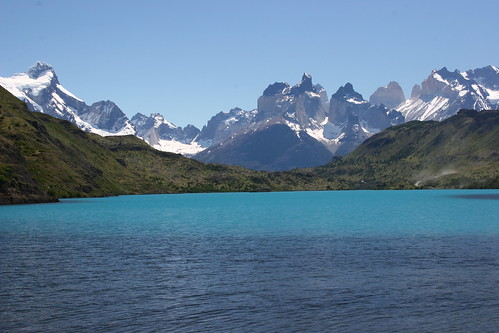
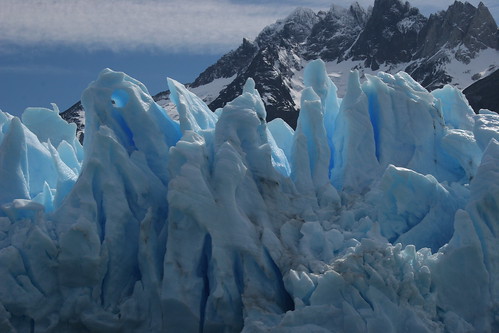
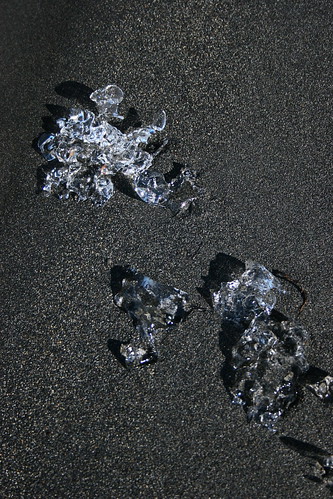
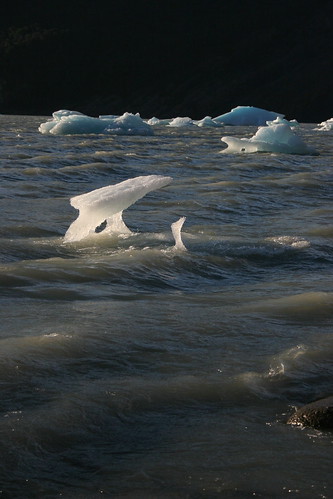
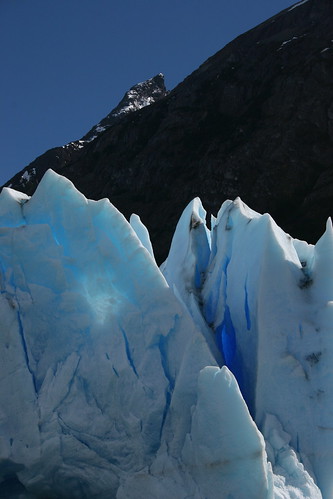
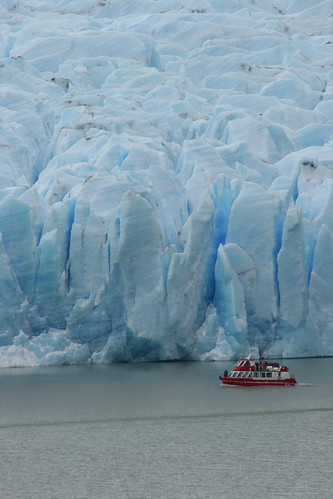
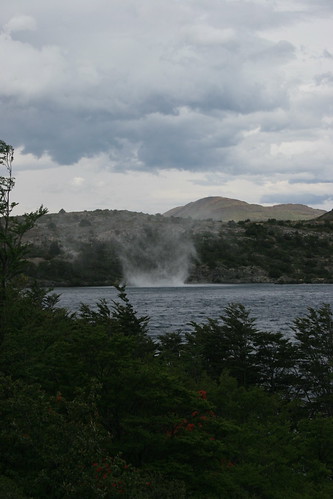
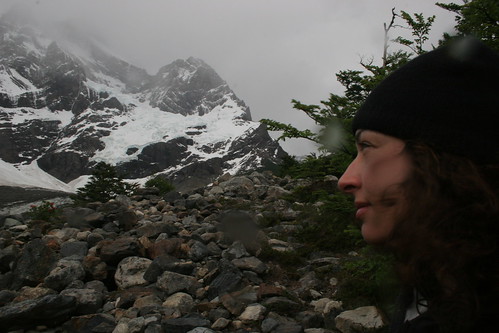
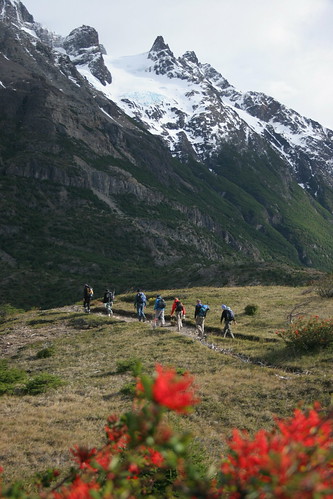

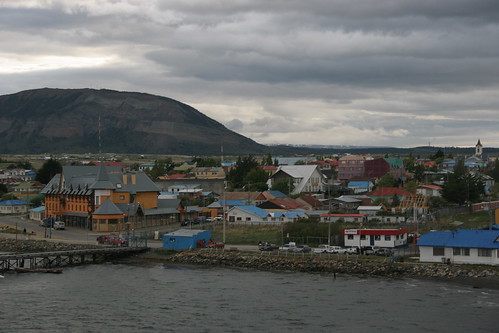
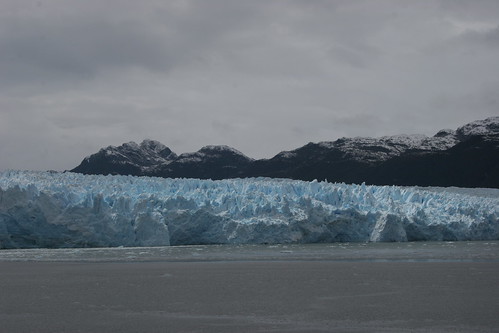
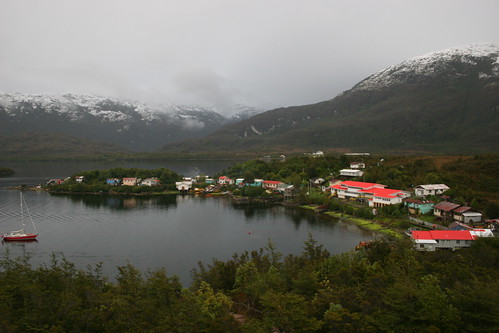
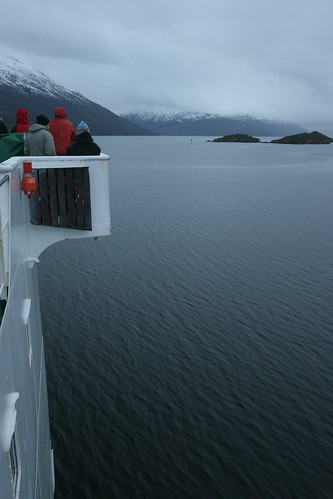
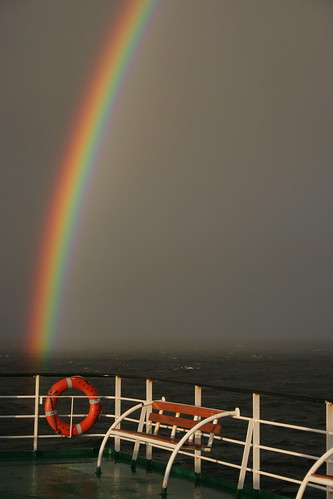
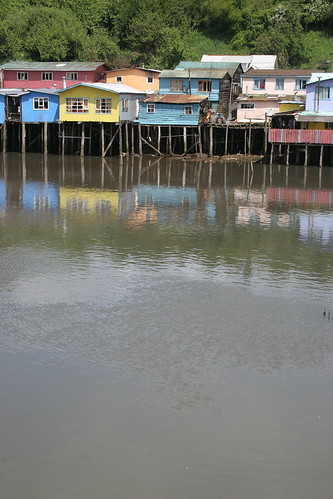
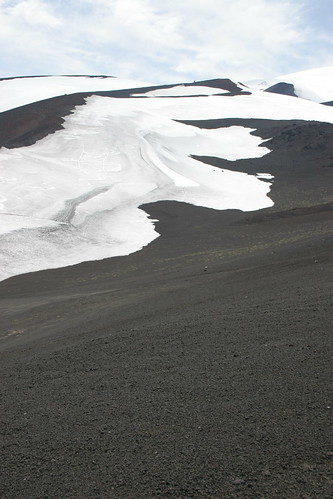
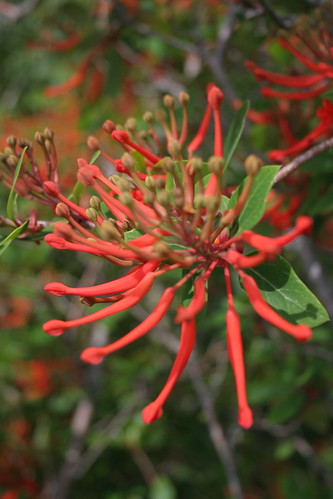
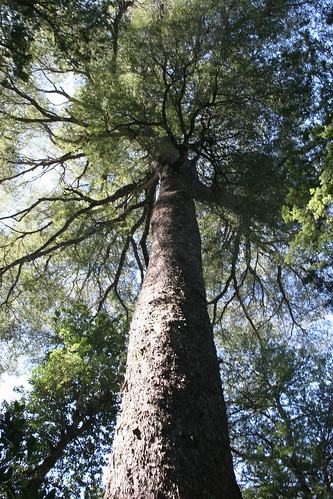
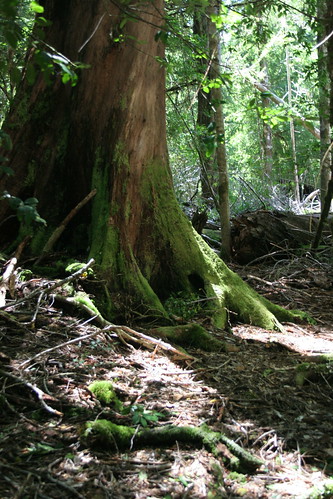
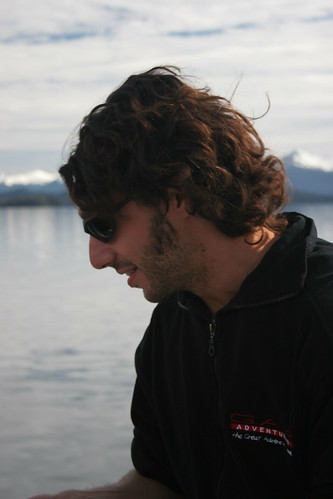
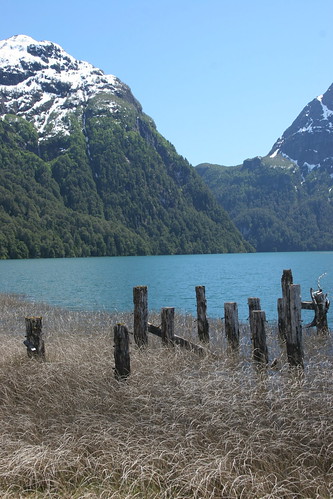
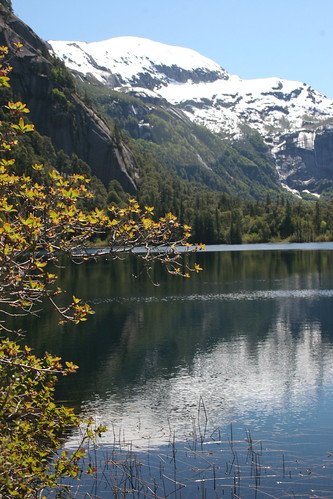

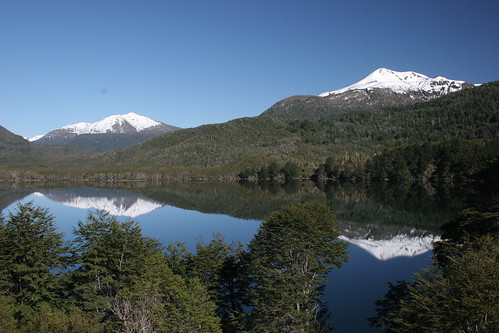
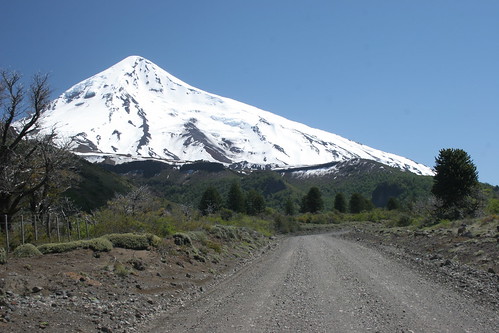
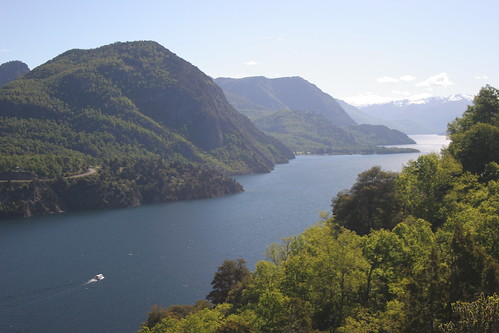
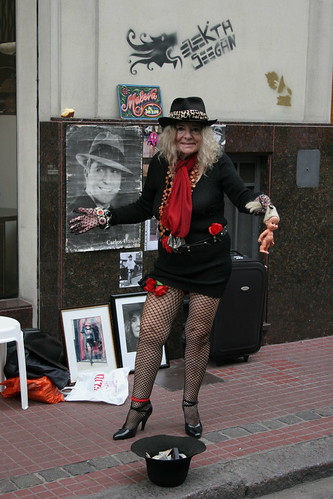
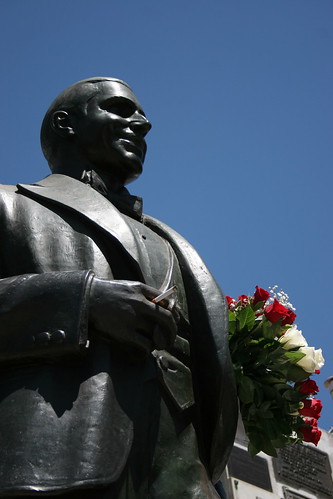
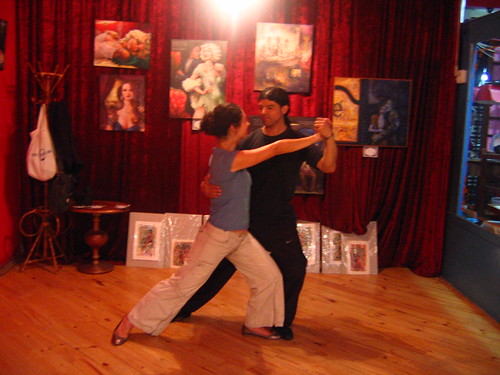
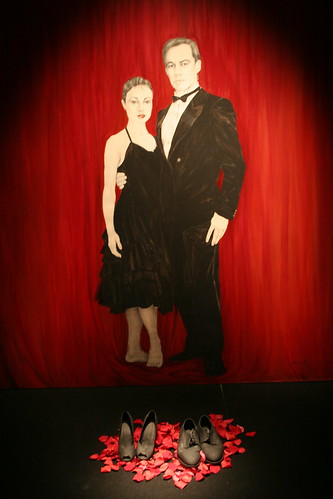
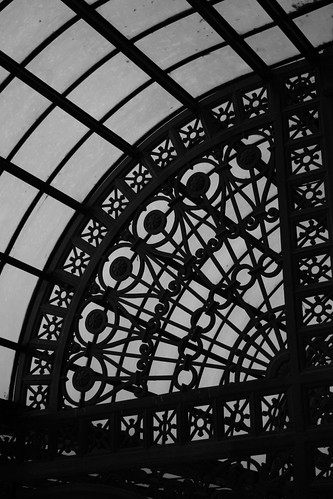
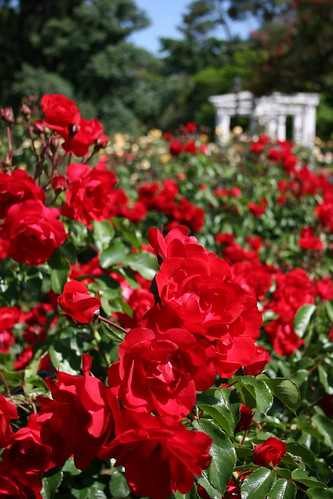
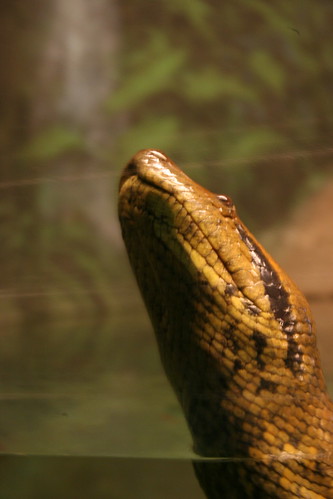
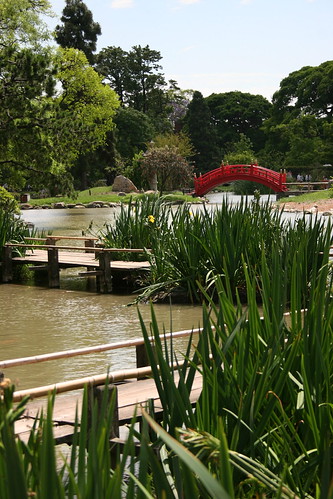
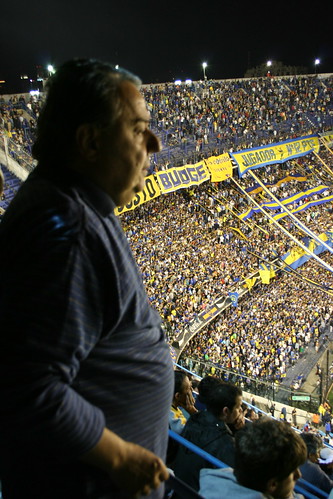
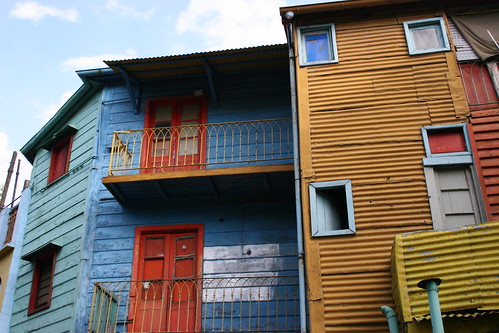
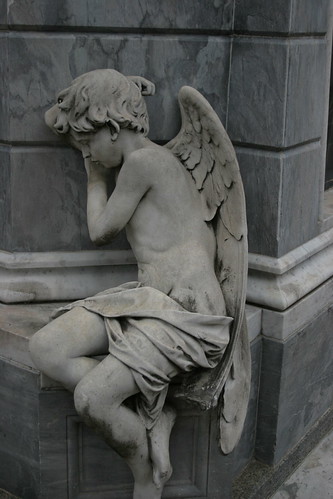
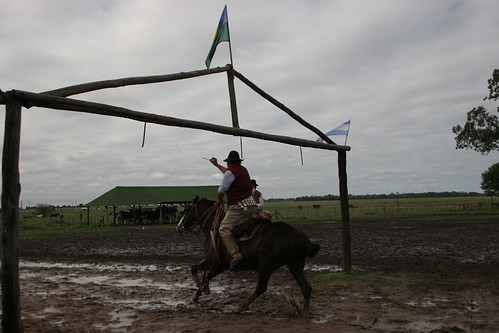
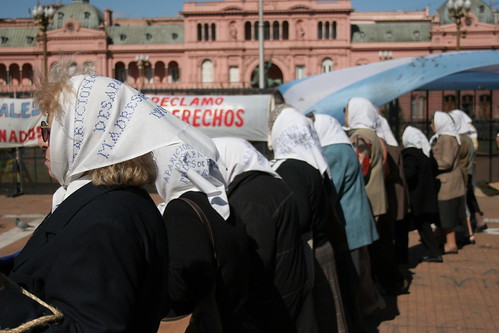
A few of my friends that have been have said that Torres del Paine National Park is stunning and even with this in mind, I´m completely unprepared for its spectacular beauty. It´s exactly as I imagined it, vast windswept plains, snowcapped mountains, looming clouds and turquoise lakes. My ideal landscape. Sublime.
As we´re arriving late into the park we´re missing one leg of the 'W' circuit (which I´m told is the dull bit) so instead we´re dropped off at Laguna Verde for a 12km walk to Rio Paine, an amazing turquoise expanse of water fed by glacial waters.
For 4 1/2 hours I walk through undulating terrain through open plains, forests, past lakes and meadows of spring flowers. By the end of the 5 days I am well acquainted with the Calafate bush (Box-Leafed Barberry) which has yellow flowers or purple berries depending on the time of year, the fire-bush (Notro or Ciruelillo) and the Chaura berries. The weather changes from rain to bright spells and I remove my onion layers only to have to put them all on again within minutes. The wind is brutal. On several occasions I nearly get blown off the mountain. One minute you´re pushing hard to walk against the wind and as it dies suddenly you topple over.
I am lagging behind as I have been taking far too many photos and make my way down the mountain on my own after a stop at the 'Laguna Los Ciervos' viewpoint which overlooks the stunning Rio Paine. The colours fill my senses - yellow (buttercups and dandelions), red (fire-bush), turquoise (lakes) - and I remember feeling happier than I have for ages.
Burnt trees fill the landscape. A serious fire started by a tourist two years ago affected 15-20% of the park. Although the park is recovering slowly it has left a legacy of dead trees that stand out like shafts of bone.
At the Paine Grande campsite the guides have laid on a spread of cheeses, hams, chocolates and wine for us, before dinner. This is definitely camping in style and I´m not complaining.